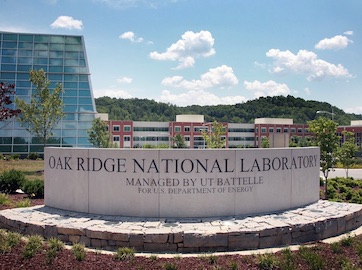Filter Results
Related Organization
- Biological and Environmental Systems Science Directorate (29)
- Computing and Computational Sciences Directorate (39)
- Energy Science and Technology Directorate (229)
- Fusion and Fission Energy and Science Directorate (24)
- Information Technology Services Directorate (3)
- Isotope Science and Enrichment Directorate (7)
- National Security Sciences Directorate (20)
- Neutron Sciences Directorate (11)
- Physical Sciences Directorate
(138)
- User Facilities (28)
Researcher
- Yong Chae Lim
- Zhili Feng
- Adam Willoughby
- Jian Chen
- Rangasayee Kannan
- Rishi Pillai
- Wei Zhang
- Adam Stevens
- Alexandre Sorokine
- Brandon Johnston
- Brian Post
- Bruce A Pint
- Bryan Lim
- Charles Hawkins
- Clinton Stipek
- Dali Wang
- Daniel Adams
- Jessica Moehl
- Jiheon Jun
- Marie Romedenne
- Peeyush Nandwana
- Philipe Ambrozio Dias
- Priyanshi Agrawal
- Roger G Miller
- Ryan Dehoff
- Sarah Graham
- Sudarsanam Babu
- Taylor Hauser
- Tomas Grejtak
- Viswadeep Lebakula
- William Peter
- Yiyu Wang
- Yukinori Yamamoto

A finite element approach integrated with a novel constitute model to predict phase change, residual stresses and part deformation.

Understanding building height is imperative to the overall study of energy efficiency, population distribution, urban morphologies, emergency response, among others. Currently, existing approaches for modelling building height at scale are hindered by two pervasive issues.

A novel method that prevents detachment of an optical fiber from a metal/alloy tube and allows strain measurement up to higher temperatures, about 800 C has been developed. Standard commercial adhesives typically only survive up to about 400 C.

This invention is directed to a machine leaning methodology to quantify the association of a set of input variables to a set of output variables, specifically for the one-to-many scenarios in which the output exhibits a range of variations under the same replicated input

A new nanostructured bainitic steel with accelerated kinetics for bainite formation at 200 C was designed using a coupled CALPHAD, machine learning, and data mining approach.

Test facilities to evaluate materials compatibility in hydrogen are abundant for high pressure and low temperature (<100C).

The technologies provide a coating method to produce corrosion resistant and electrically conductive coating layer on metallic bipolar plates for hydrogen fuel cell and hydrogen electrolyzer applications.

Welding high temperature and/or high strength materials for aerospace or automobile manufacturing is challenging.

